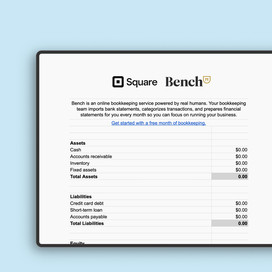Table of contents
This article is for educational purposes and does not constitute legal, financial, or tax advice. For specific advice applicable to your business, please contact a professional.
Customers are increasingly turning to digital banks. In fact, a 2021 YouGov report shows that more than half (56%) of U.S. adults say they use mobile banking once a week if not more often.
As of March 2020, over half of J.P. Morgan Chase’s digitally active customers are over the age of 50. A change that points to increased comfort with managing funds digitally, regardless of age. In fact, a recent FICO study found that 41% of North American consumers are more likely to use digital means to open a financial account than they were a year ago.
Banking for a digital-first world
As the world moved increasingly online in the 1990s and early 2000s, many large banks began making most or all of their services available via the internet. By 2007, banks began offering their services via smartphones. Mobile banking would go on to become a highly popular way for consumers to bank. The FDIC reported that by 2019, more than a third (34%) of American households surveyed said mobile was their primary method of accessing their bank account, an increase of 18.4% from 2017.
Now that conducting banking activities through digital channels has become commonplace, the digital-only model of banking is on the rise. A July 2020 survey of U.S. consumers from Cornerstone Advisors found that 14.2 million Americans — 6% of U.S. adults with a checking account — now consider a digital bank to be their primary bank (representing a 67% increase from months earlier in January 2020).
Making banking accessible online and via smartphone
Broadly, digital banking refers to using online or mobile tools to engage in the kinds of financial services activities that were historically only available through physical bank branches — such as making deposits, managing account changes, or transferring funds. Digital banking (also known as “branchless banking”) can be conducted through fully online digital banks, which have no physical locations whatsoever, or through traditional banks that offer mobile and online versions of their services. Digital banking allows customers to access their accounts and services beyond traditional banking hours, since mobile apps and desktop sites are available to them 24/7.
Many consumers are turning to all-digital banks because they don’t need to utilize physical bank branches to conduct their main banking activities. The majority of activities that used to require the help of a bank teller — such as funds transfers or depositing a check — can now take place via a desktop website or smartphone.
What you CAN do with a digital bank:
- Check account balances
- Manage/make bill payments
- Access and manage loans
- Transfer funds
- Apply for credit cards or lines of credit
- Set and receive balance, transaction, and fraud-detection alerts
- Deposit checks
- Deposit cash (using digital banks’ cash deposit partners)
- Withdraw funds (using in-network ATMs)
What you CAN’T do with a digital bank:
- Visit or transact at an in-person branch
Digital banks also offer services that bridge the physical-digital divide for their customers. When it comes to withdrawals, for example, digital banks typically partner with ATM networks to offer low- or no-fee access for their customers. When it comes to deposits, digital banks often accept cash deposits through retailer partners (stores like CVS and Walgreens), though this can sometimes incur fees.
Many digital banks also offer perks such as overdraft protection, no minimum balances, and higher-than-average savings account yields in an effort to attract and retain customers. Some digital banks also provide so-called “robo-advisory” services — aka digitally-powered financial advice — for investing and/or wealth management.
Digital banks can offer these perks in part because they operate with low overhead costs since they maintain no physical branches. Providing low-cost services to retail banking customers is important, as a key audience for many digital banks’ services are unbanked and underbanked individuals.
A path forward for consumers and businesses
In the U.S., 6% of adults are unbanked and 16% are underbanked — meaning that they have bank accounts but also use nontraditional financial services like payday loans or check-cashing services — according to the Federal Reserve. Digital banking offers favorable terms and easier-to-access mobile and online services.
Retail customers are not digital banks’ only audience, however. Digital banks increasingly offer business banking services, including business loans and business checking and savings accounts, in addition to consumer offerings. And by working with a digital bank that integrates with their point-of-sale system and other software solutions, businesses may be able to gain faster access to funds from the sales they process.
In 2021, consumers and businesses are embracing digital ways of doing things — such as remote work and online shopping — more than ever before. This is especially true when it comes to banking: According to Deloitte research, customers now prefer using digital channels for transactions and opening accounts.
With new offerings and services emerging all the time, digital banking’s convenience and safety are here to stay and can serve a growing number of consumers’ and businesses’ needs.
To start your journey to digital banking, learn more about Square Banking.
–
Square, Inc. is financial services provider; not a bank. Banking services are provided by Sutton Bank and Square Financial Services, Inc., Members FDIC.
![]()












